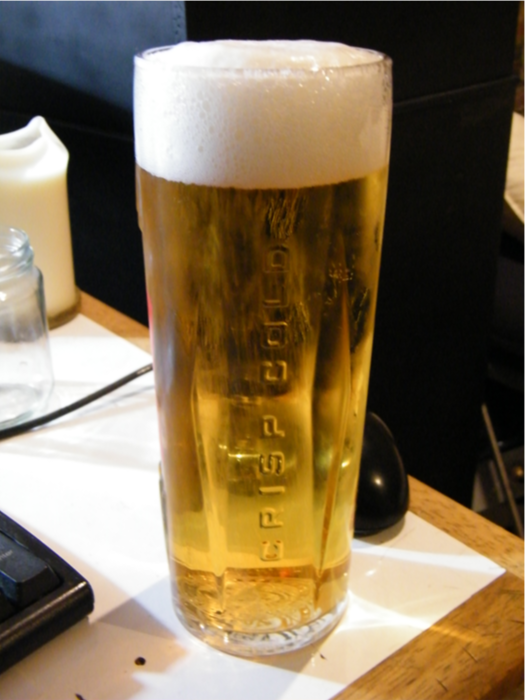When CO2 dissolves in water it quickly (milliseconds) hydrates: CO2 + H2O --> CO2(aq). Then some, but only a very small part, of that reacts, but slowly* to become carbonic acid: CO3(aq) <--> H2CO3. There is a separate equilibrium constant for each of these but keeping track of them is a PITA so chemists often write CO2 + H20 --> H2CO3* with H2CO3* representing the sum of the hydrated and carbonic acid. Then [H2CO3*] = PaCO2*Khy with Khy being the familiar Henry coefficient which can be calculated from the CO2 + H2O --> CO2(aq) Henry coefficient and the equilibrium constant for CO3(aq) <--> H2CO3. Also H2CO3* <--> H+ + HCO3- with the pK for this reaction being a function of the equilibrium constants for H2CO3 <--> H+ + HCO3- and the CO2 + H2O --> CO2(aq) Henry coefficient. Most of us sail blissfully along writing CO2 + H2O <--> H2CO3 and H2CO3 <--> H+ + HCO3- using pKhy = 1.41 and pK1 = 6.38.
As for what happens to foam in beer according to the source of the carbonation I think we have all observed that the CO2 seems to meld with the beer over time. This is pretty subtle and we wonder what the outcome of a triangle test exploring this phenomenon would find. The reaction rate of CO2(aq) in slow but not that slow, at least not on the time scale over which I observe (or fancy I observe) this melding so I have to think, as has been suggested in this thread, that the phenomenon is caused by changes in the chemistry of the beer over time resulting in changes in the surface tension.
*The forward reaction rate for the conversion of CO2(aq) to carbonic acid is much to slow to allow our bodies to use CO2 to regulate blood pH. We have, therefore, the enzyme carbonic anhydrase which speeds the reaction immensely.
























































![Craft A Brew - Safale S-04 Dry Yeast - Fermentis - English Ale Dry Yeast - For English and American Ales and Hard Apple Ciders - Ingredients for Home Brewing - Beer Making Supplies - [1 Pack]](https://m.media-amazon.com/images/I/41fVGNh6JfL._SL500_.jpg)


